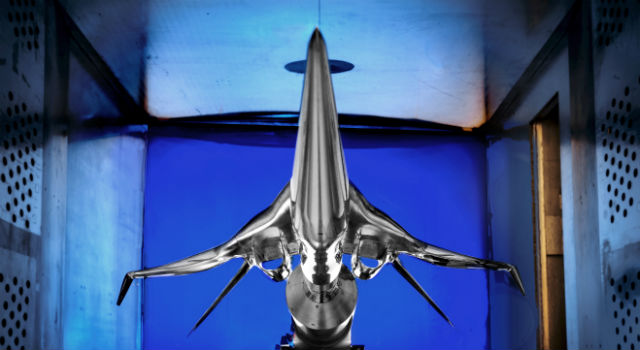NASA’s aeronautics research programme has seen a long period of decline since its glory days. Since 2000, a $1 billion annual budget for atmospheric flight research has been chopped roughly in half, and its share of overall NASA appropriation has declined from 7% to 3%.
However, there are signs that the fortunes of the aeronautics research division are changing.
The US House Appropriations Committee has passed a NASA budget bill for next year, after increasing outlay to the aeronautics division to $666 million – $115 million more than the Obama administration requested, and $100 million more than enacted in fiscal year 2014.
The Senate has yet to move on the budget for fiscal year 2015, but NASA officials are buoyed by the show of support from the House.
“If you show, say, good merchandise, then that merchandise sells by itself,” says Jaiwon Shin, NASA’s association administrator for aeronautics research. “Our aeronautics content, vision and strategy – and how we’ve been delivering these – have all been coming together.”
NASA aeronautics has developed an ambitious vision that could resurrect the administration’s long-dormant flight test programme. The theory involves manned X-Planes, advances in autonomous tools for piloting aircraft and for managing airspace, and new authority to rapidly demonstrate concepts aimed at solving system-level problems.
In the heyday of NASA aeronautics research, the agency’s engineers and test pilots proved the viability of supersonic flight with the Bell X-1, of hypersonic flight with the Bell X-15, and of the forward swept wing with the Grumman X-29, but funding reductions and a risk-averse culture have led to a nearly three-decade dearth of such experiments.

NASA
NASA’s rendering of a possible future civil supersonic transport
This stagnation could end in the near future, however. NASA has proven the viability of technology that could be used to dramatically soften the boom of a supersonic aircraft, but a business jet-sized X-Plane is needed to perform an acoustic survey that could force international regulators to lift a ban on overland supersonic flight.
The aeronautics division considered modifying an existing NASA asset, such as a Boeing F-15A, but found there was no practical way to simulate a low-boom configuration, Shin says. The acoustic data also would be accepted if gathered by a subscale aircraft.
“This one really needs to be a real plane with a certain size, because a sonic boom is a function of size,” he says.
A supersonic X-Plane was not included in NASA’s budget request for fiscal year 2015, and Shin says the project could be launched in the “out-years, if we’re allowed to do it”.

NASA
NASA has proven the viability of technology for dramatically softening the boom of a supersonic aircraft
In the near term, NASA’s more direct contribution to the aerospace industry will be in the area of autonomy. The US National Research Council is to issue a report within weeks on how NASA research could enable breakthroughs in autonomy for the aviation industry.
One idea involves creating a virtual model of the national airspace system. Upgrading the current system is problematic because software cannot be tested under the pressure of a full-scale traffic management system. Instead, NASA is creating a full simulation of US air traffic – a “smart national airspace system” – which will allow the Federal Aviation Administration to test software changes before they become operational.
Another goal is to expand the use of autonomy in the flightdeck. “If we introduce a high level of autonomy, a single-pilot operation can be conceived,” Shin says. “I say it with upmost caution,” he adds.
NASA is also working to address system-level problems. Included in the administration’s budget request for fiscal year 2015 is funding to launch a new project called “convergent aeronautics solutions”. The goal is to challenge NASA’s workforce to demonstrate a solution to a systemic problem within 18-36 months, a timeframe suggested by venture capitalists, Shin says.
“If you can’t demonstrate feasibility in two to three years, then you’re done. It’s not going to happen,” Shin says. “We’re trying to provide a home for the NASA workforce to do rapid demonstration of concept feasibility.”
Source: FlightGlobal.com
















